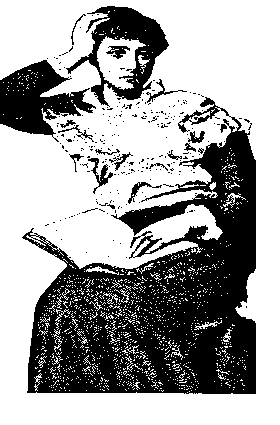John Ulrich Giessendanner was a native of Lichtensteig in Toggenburg. He was not a minister of the Swiss Reformed Church, but a goldsmith by profession. His apprenticeship had been served in the distant German cities of Halle and Magdeburg, where he met the vigorous new movement of church reform called Pietism. Perhaps he had already learned some of the Pietists' ideas in his hometown, for about 1710 the minister there, Deacon Nicholas Scharer (note *1), had emphasized the need for holy living and pure disposition. Whether he learned to know Pietism in Switzerland or in Halle, Giezendanner identified himself with the movement and utilized its stress on lay participation as an occasion to supplement his activity in the goldsmith's trade by religious teaching. When Nicholas Scharer died in 1713, Giezendanner returned to Lichtensteig as a "teacher."
*1 Diakon Niklaus Scherrer was suspended in 1711 and died shortly afterwards
Within a year Giezendanner's religious ideas
stimulated such opposition that he was required to appear
before authorities in the governmental center of Zurich to
explain his activities. Apparently his explanations satisfied
the government, because there is no record of his being
punished. However, the provisions under which he was allowed
to go free offer substantial clue to the nature of Giezendanner's preaching. He had to agree that only regularly
called men should preach, that a "reborn" person
should not consider himself better that other church members,
and that direct illumination in dreams and instruction by
angels were fantasies. This last, and somewhat surprising,
element becomes the key to Giezendanner's next stage of
development.
(061118 comment Joop:
not entirely accurate)
 Apparently determined to become a
"regularly called" minister in order to continue
his preaching, Giezendanner traveled to Germany once more and
enrolled in the University of Marburg in June 1714. Probably
to help support himself while there, he took a teaching
position in the Marburg Orphanage. But instead of bringing
him into the official structure of the church, the Marburg
environment stimulated his individualistic tendencies. He
became involved in a radical group called
"Inspirationists," who believed the Holy Spirit
gave them direct revelations, often accompanied by physical
contortions and vocal outburst. In the summer of 1715, after
a little more than a year in Marburg, Giezendanner
interrupted the local minister during a service, mounted the
pulpit without permission, and began to preach "from the
Spirit". Immediate banishment followed, and he returned
to Switzerland.
Apparently determined to become a
"regularly called" minister in order to continue
his preaching, Giezendanner traveled to Germany once more and
enrolled in the University of Marburg in June 1714. Probably
to help support himself while there, he took a teaching
position in the Marburg Orphanage. But instead of bringing
him into the official structure of the church, the Marburg
environment stimulated his individualistic tendencies. He
became involved in a radical group called
"Inspirationists," who believed the Holy Spirit
gave them direct revelations, often accompanied by physical
contortions and vocal outburst. In the summer of 1715, after
a little more than a year in Marburg, Giezendanner
interrupted the local minister during a service, mounted the
pulpit without permission, and began to preach "from the
Spirit". Immediate banishment followed, and he returned
to Switzerland.
next page